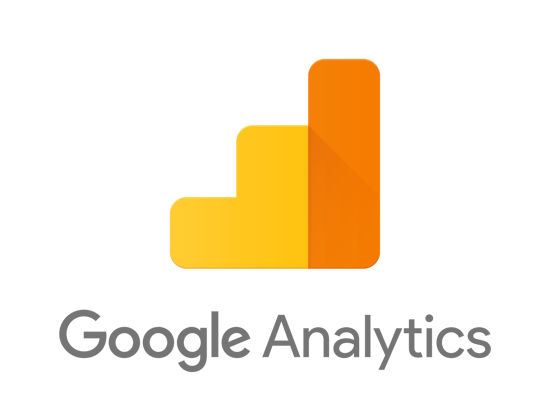Our services
With our services, every challenge becomes an opportunity to strengthen your brand and boost your sales.
See all servicesMarketing services
Technology services
Home / Blog
Analysis to optimize natural referencing | Webize

Analysis for SEO optimization (Search engine optimization) is essential for online businesses. It helps generate organic traffic and improve search engine rankings. Analysis is crucial for SEO optimization as it provides data-driven insights. These insights concern user behavior, website performance, and SEO opportunities.
In this article, we will explore how web analytics can be used to optimize SEO. We will discuss the benefits of web analytics, how to implement it for SEO, identify opportunities, analyze competitors, and make data-driven decisions for continuous optimization.
What is web analytics?
Web analytics tools collect, measure, and analyze website data to better understand user behavior and performance. Web analytics tools provide businesses with insights into key metrics such as:
– Website traffic
– User engagement
– Conversions
These insights help optimize website performance, enhance user experience, and increase traffic to a website.
SEO and web analytics
Regarding SEO, web analytics can provide valuable insights into keyword performance, organic traffic, and user behavior. By analyzing these metrics, businesses can identify areas for improvement in their SEO strategy. This allows them to make data-driven decisions to optimize their website for SEO.
Common web analytics tools
Common web analytics tools include Google Analytics, Adobe Analytics, and Matomo. These tools allow businesses to track website performance, user behavior, and conversions. Businesses can better understand their website’s strengths and weaknesses and use these insights to optimize their SEO strategy for better results.

Steps to implement web analytics for SEO
Implementing a web analytics system for SEO involves several key steps. The first step is choosing a web analytics tool that meets your business needs. Google Analytics is a popular choice because it is free and offers robust tracking features. Once the tool is chosen, you need to add the tracking code to your website. This code allows the tool to collect data on user behavior and website performance.
Tracking the right metrics for SEO success
Tracking the right metrics is essential for SEO success. Organic traffic, bounce rate, page views, and conversion rate are some key indicators to monitor. By tracking these metrics, you can identify areas for improvement in your SEO strategy. This enables you to make data-driven decisions to optimize your website.
Tips for choosing the right web analytics tool
When choosing a web analytics tool, consider factors such as ease of use, reporting features, and integration with other tools. You should also consider your business’s specific needs and choose a tool that will provide relevant insights for your SEO strategy.
Using web analytics to identify SEO opportunities
Web analytics is a powerful tool for identifying areas of improvement in SEO. By analyzing metrics such as bounce rate, page views, and session duration, businesses can identify underperforming areas of their website and adjust their SEO strategy accordingly.
Key metrics to track for SEO optimization
A high bounce rate may indicate that visitors are not finding what they need on a specific page. Analyzing page content, its relevance to the user’s search intent, and its load speed can help improve the user experience and reduce the bounce rate.
Similarly, a low number of page views may indicate that visitors are not navigating the website effectively. Analyzing the website’s navigation structure, internal linking strategy, and content relevance can help businesses improve site navigation and internal linking to keep visitors engaged longer.
Other essential metrics for SEO optimization include organic traffic, conversion rate, and click-through rate (CTR) from search engine results pages (SERPs).
Analyzing competitors’ SEO strategies
Analyzing competitors’ SEO strategies is crucial for optimizing your SEO strategy. It’s an excellent way to learn what competitors are doing well and areas where they could improve. With this information, your business can develop a more effective and competitive SEO strategy.
Using web analytics tools to analyze competitors’ SEO strategies
Web analytics tools can help analyze competitors’ SEO strategies by identifying their top-ranking pages, analyzing their backlink profiles, and monitoring their content strategies. Businesses can also study competitors’ use of keywords, meta descriptions, and titles to determine their content’s relevance to targeted keywords.
Integrating competitor analysis into your SEO strategy
To integrate competitor analysis into an SEO strategy, businesses should identify their main competitors and analyze their website structure, content strategy, and backlink profiles. This analysis can provide insights into the types of content that resonate with the audience and potential backlink opportunities in the industry.
Finally, businesses should use the results of competitor analysis to improve their SEO strategy. This may involve creating better content, optimizing website structure, and building a more effective backlink profile.


Making data-driven decisions for SEO
Web analytics is a crucial tool for making data-driven SEO decisions. Businesses can use it to track website traffic, user behavior, and conversion rates. These data can provide valuable insights into successful SEO strategies and those needing improvement.
One way to use web analytics for data-driven SEO decisions is by tracking high-performing and low-performing pages. By analyzing user behavior and engagement on different pages, businesses can determine which pages need optimization for better performance.
A/B Testing and Its role in SEO optimization
A/B testing is another way to make data-driven SEO decisions. This test involves creating two versions of a webpage and testing them to determine which performs better. This could involve testing elements such as headlines, images, or calls to action. By analyzing A/B test data, businesses can make informed decisions about which elements to use on their website to improve SEO performance.
Monitoring and adjusting SEO strategies
Monitoring and adjusting SEO strategies based on web analytics data is essential for maintaining and improving SEO performance. By regularly reviewing web analytics data, businesses can identify changes in user behavior, track the effectiveness of SEO strategies, and adjust their approach accordingly.
How to monitor and adjust SEO strategies based on web analytics?
To monitor and adjust SEO strategies based on web analytics data, businesses should regularly review metrics such as website traffic, bounce rate, conversion rates, and keyword rankings. By tracking these metrics over time, businesses can identify trends and adjust their strategies to capitalize on success areas or address weaknesses.
Continuous optimization using web analytics
For continuous optimization using web analytics data, it is important to regularly review and adjust keyword targeting based on search volume and user behavior. Analyzing the performance of different keywords allows you to adjust targeting to meet user search intent and improve search engine rankings.
Conclusion
Web analytics is a powerful tool for optimizing your website’s SEO and improving your online presence. By leveraging key metrics and competitor analysis, you can make data-driven decisions and adjust strategies to stay ahead of the competition. Remember to focus on high-quality traffic, A/B testing, and continuous optimization to ensure long-term SEO success.
Using web analytics to inform your SEO strategies can attract more visitors, enhance engagement, and ultimately generate more conversions. Start tracking these metrics, analyzing your competitors, and optimizing your SEO for maximum impact!
POPULAR articles
Discover our other articles










